Where to put a microwave in a kitchen – plus 3 vital spots to avoid
It's a simple detail, but it can completely change your kitchen's functionality

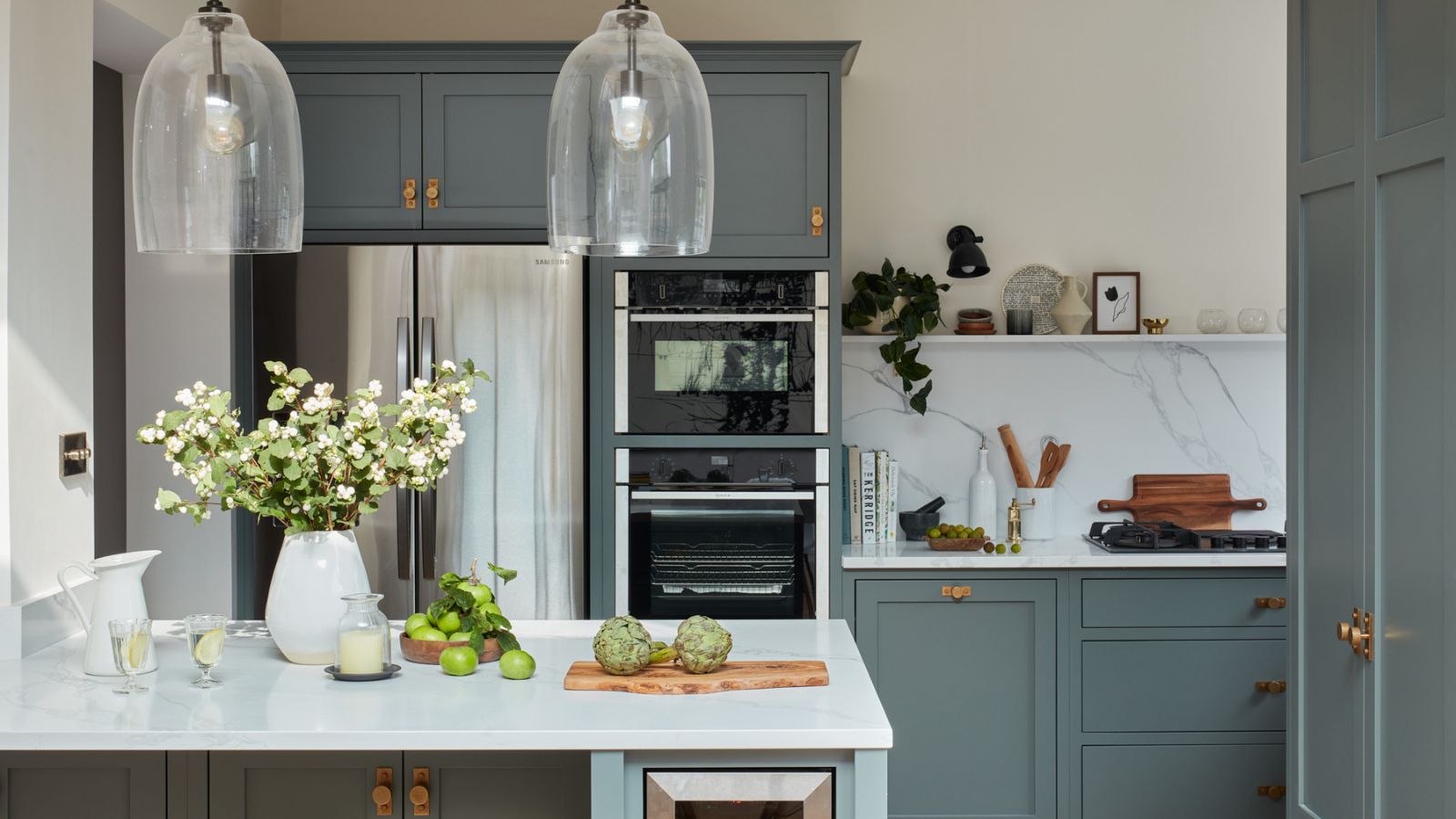
It may only be a simple appliance, but working out where to put a microwave in a kitchen can make or break the space.
Not only are there important safety considerations, but getting the location right can make cooking and cleaning 10 times easier.
Here, designers have revealed the best locations for a microwave in a kitchen, and the three places you should absolutely avoid to ace your kitchen layout ideas.
Where to put a microwave in a kitchen
According to interior designer Sarah Walker of Nuance Interior Design, the ideal location for your microwave all hinges on the flow of your kitchen work zones.
On her kitchen projects, she generally places the microwave away from high-traffic areas, such as the range or sink. Positioning them elsewhere is both safer and makes it easier for more than one person to use the kitchen.
With that in mind, these are the most common spots for a microwave in a kitchen.
1. Under the counter
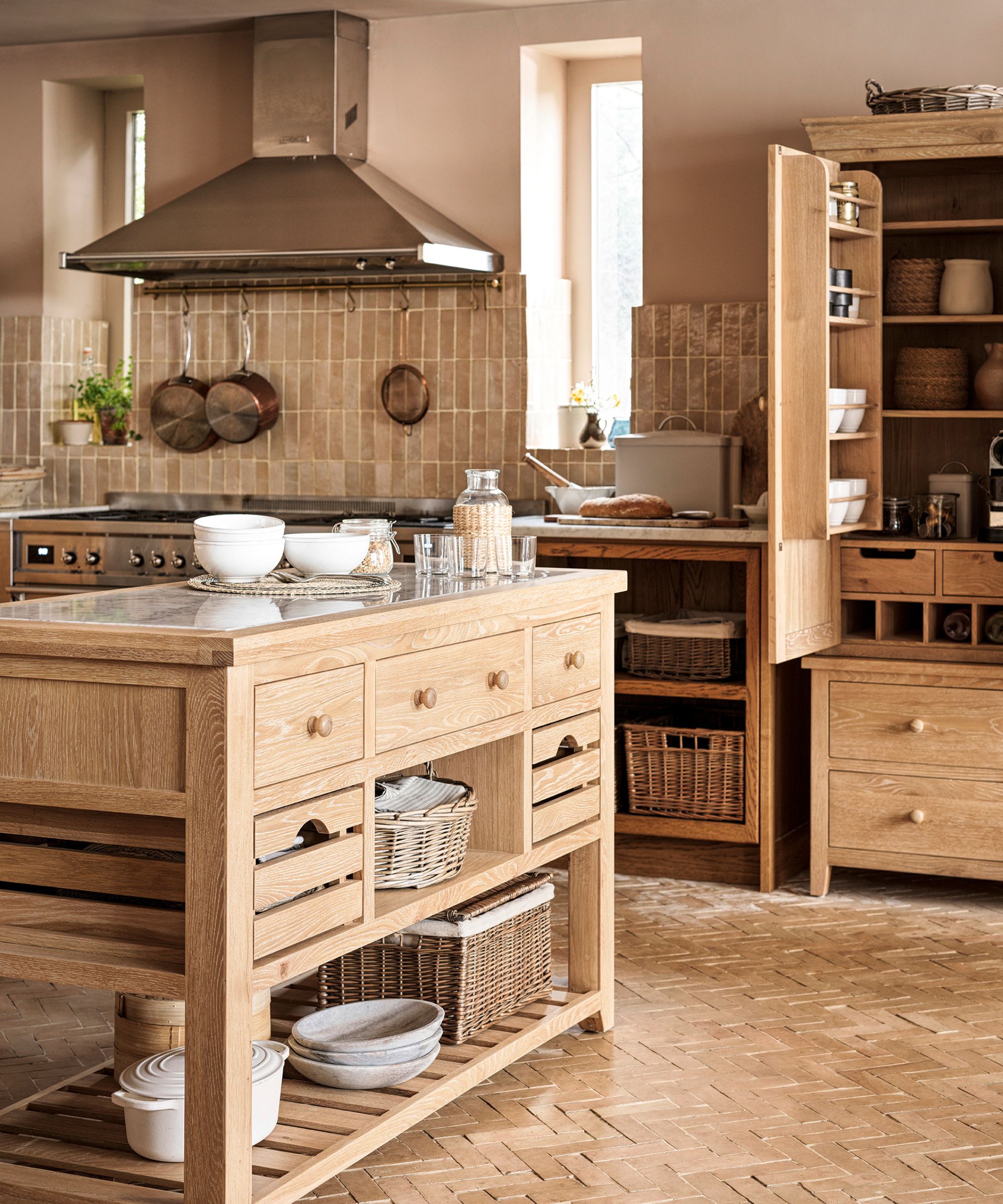
Slotting a microwave under a counter is perfect if you so not use it often.
Trudi Smith, an interior designer based in upstate New York, begins, 'In today's kitchens, clients often prefer the range to be a focal point with custom tile and beautiful hoods. They prefer a cleaner look to their kitchen, stowing small appliances away with modern kitchen storage ideas.'
Design expertise in your inbox – from inspiring decorating ideas and beautiful celebrity homes to practical gardening advice and shopping round-ups.
Trudi most often suggests putting the microwave under the counter, often on the end of the island, to free up space in upper kitchen cabinets.
Building your microwave into the cabinetry below your countertop means it's at a great height for kids warming up snacks and keeps it out of the main kitchen flow. This Whirlpool Sensor Cooking Microwave is available with an additional built-in trip kit, helping it to blend into your kitchen.
If you have to leave your microwave on a counter, consider a microwave shelf from Wayfair to add some extra storage space over the top of your appliance.
2. Built-in (at just the right height)
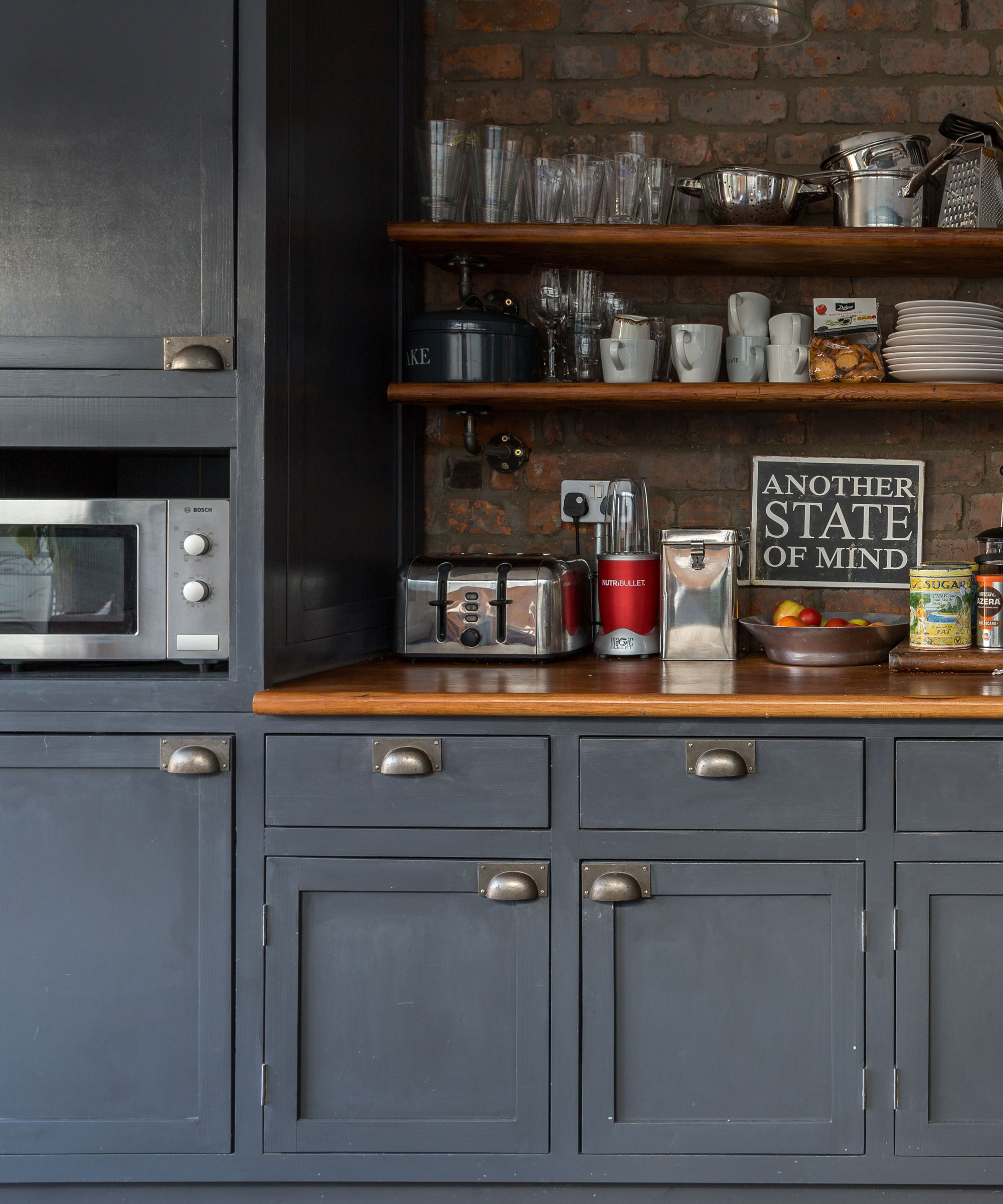
Building a microwave in keeps counters clutter free.
To keep kitchen countertops clear, Maia Roffey, director and principal at Black Sheep Interior Design, continues, 'I like to place a trimmed-out microwave into a bank of full-height cabinets around a fridge and pantry area. This puts it close to food storage for defrosting and reheating.
'We think it makes a lot of sense to position your microwave near your refrigerator as it means the other two corners of the kitchen triangle, the sink and the stove, are free, avoiding a scenario of 'too many chefs'.
'If you are considering a wall oven, stacking the microwave above the oven makes a cohesive area for warming food,' adds Maia. She recommends thinking about the heights of the members of your family before installing them.
Think about what height will feel comfortable day-to-day: chest height or countertop height will be easy to reach and means the counter is close enough for setting hot plates or mugs down after taking them out of the microwave.
It also depends on who is using the microwave – placing it in kitchen island ideas, for example, would mean it's within reach of kids, which might be useful for heating up snacks, but could also be dangerous with young children around.
3. Use a drawer microwave
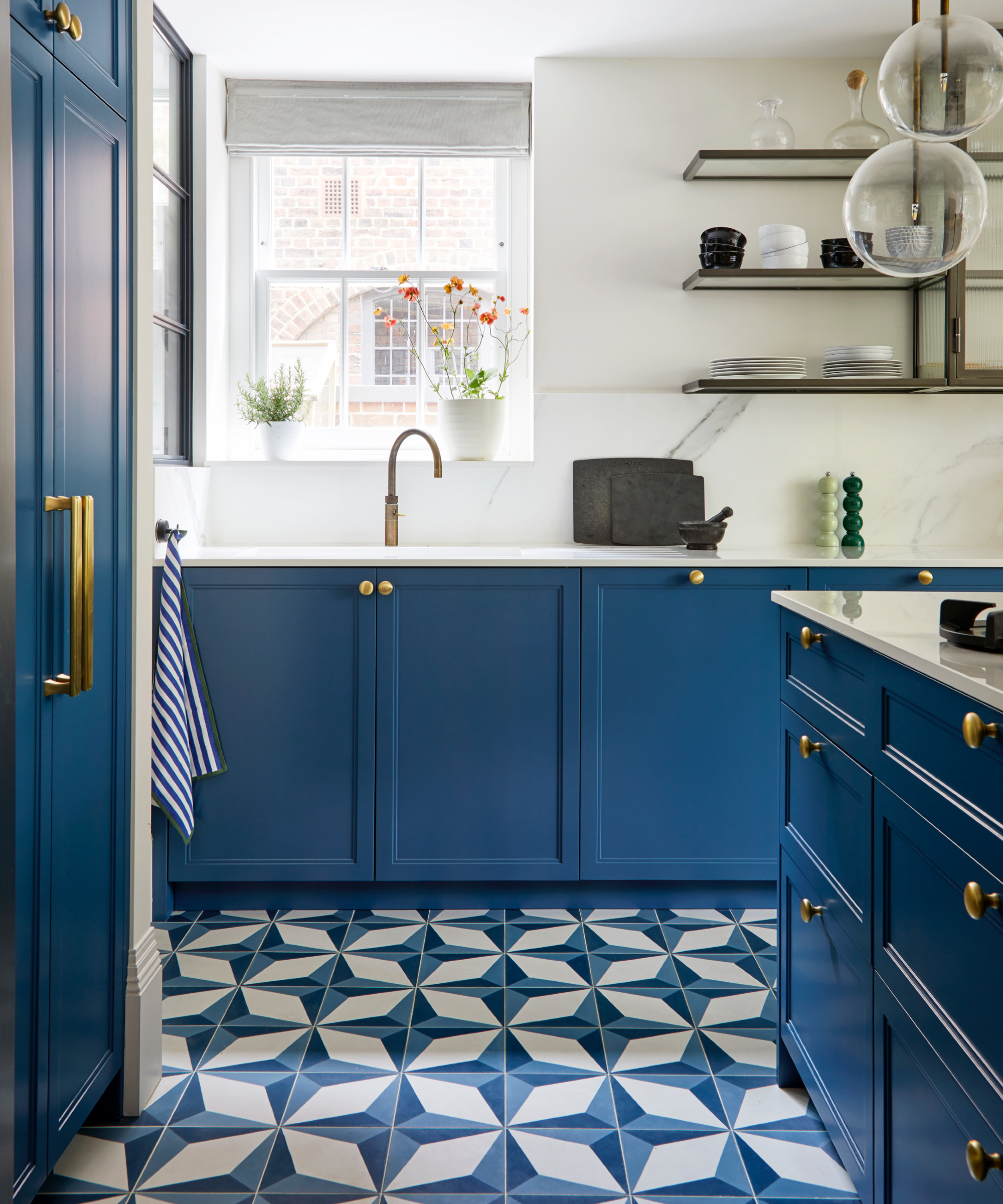
Drawer microwaves mount under the counter to make lifting items in and out easier.
Maia also recommends a drawer microwave to declutter countertops. These are mounted below the counter and, as you would expect from the name, they pull out like a drawer.
She explains, 'They free up counter space and my clients who have installed them say they find the drawer function to be more ergonomic than a traditional micro,' Maia shares. 'But these units are significantly more expensive than standard models,' and is an important practicality to consider when renovating a kitchen.
For example, a drawer microwave from Best Buy starts at around $1,200, but it comes with 11 power levels with up to 1,000 watts of power and a 1.2 cu. ft. capacity.
4. In the pantry

Adding a microwave to a pantry is practical for snacks.
Alternatively, incorporate small appliances into your walk-in pantry ideas. This keeps the clutter out of the main kitchen and creates an extension to your workspace, a little like a butler's pantry that gives you extra behind-the-scenes space when entertaining.
If you have a microwave with a smaller wattage, Trudi says you could keep your microwave in a pantry cabinet. 'Always consult the appliance specifications for space, ventilation, and proper use recommendations. Your electrician will be able to guide you on local regulations,' she adds.
If you have a small kitchen, consider that adding your microwave to your pantry will make organizing a pantry harder, so the decision should be carefully measured, especially if you regularly have to organize your home after bulk-buying groceries.
5. On a rolling cart
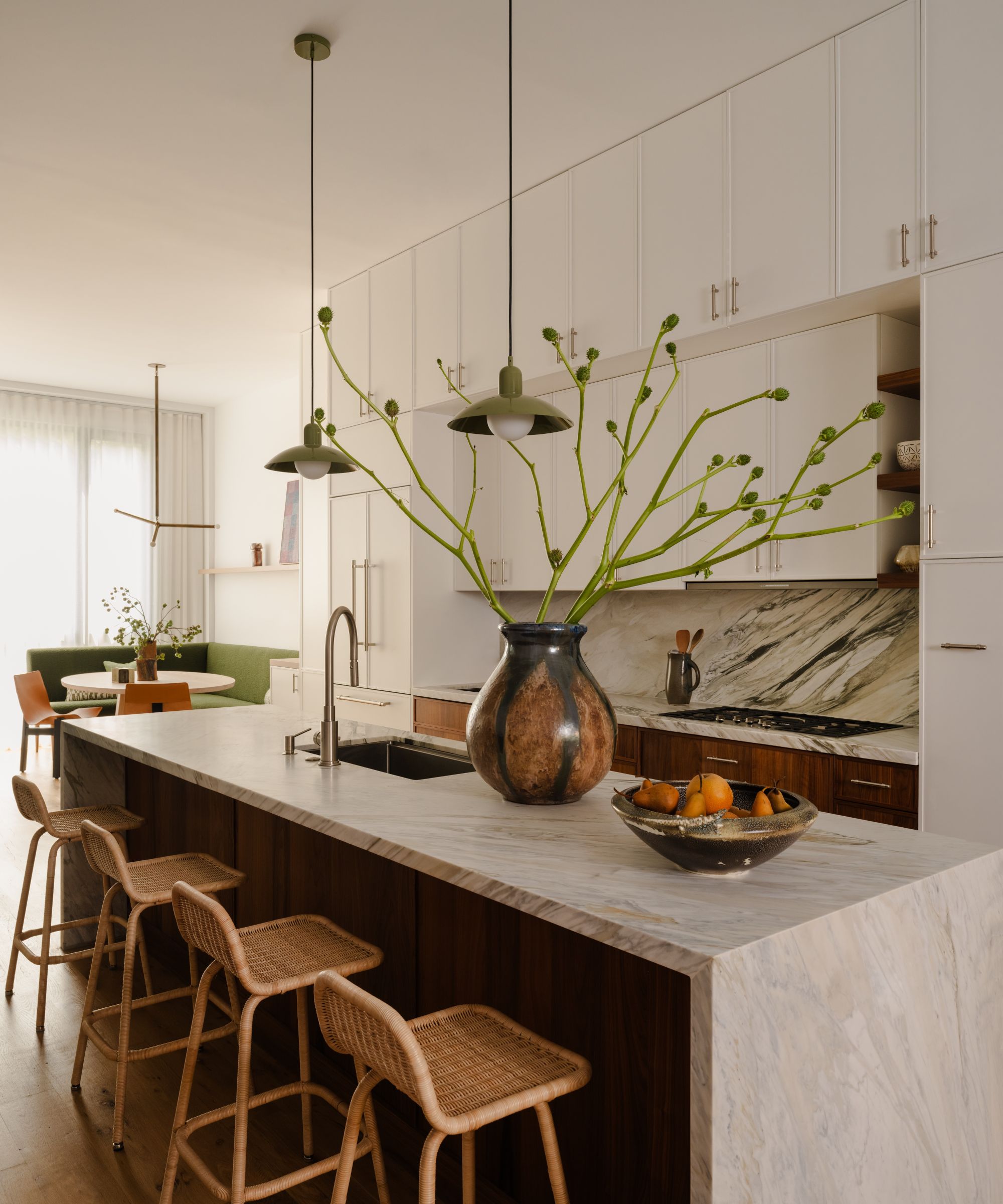
A rolling cart can add extra space to an island.
No pantry space and need to maximize kitchen storage without new cabinets? Invest in a rolling kitchen cart, available at Wayfair.
Place your microwave on the top, and organize cookbooks and other food containers on its shelves beneath. These are easy to transport around as needed and offer handy additional storage.
Keeping it out in the open makes cleaning a microwave easier, too.
6. In an appliance garage
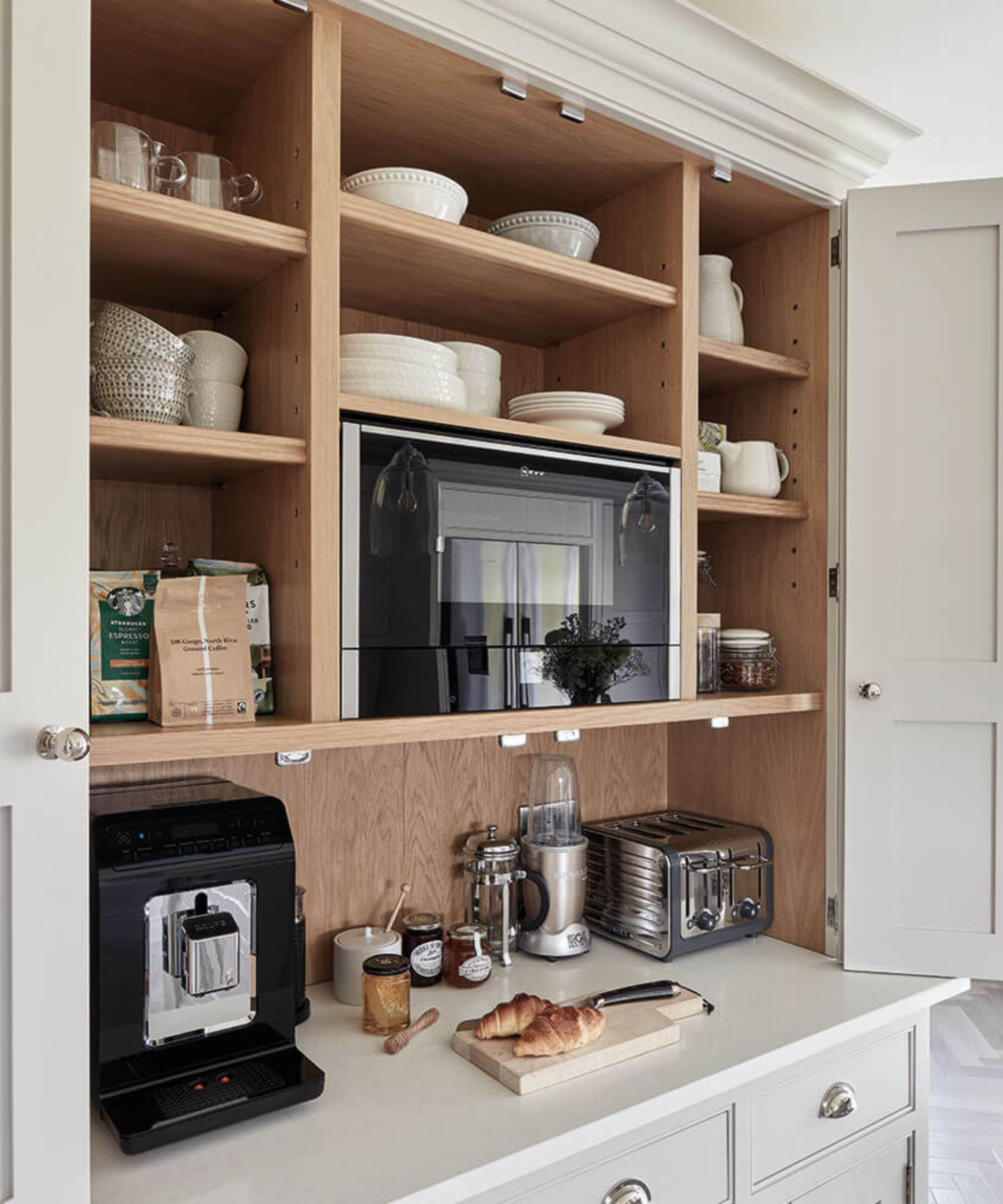
Appliance garages are an easy way to reduce visual clutter in a kitchen.
The appliance garage trend is the key to a visually clutter-free kitchen, especially if you love a minimalist aesthetic.
Store frequently used appliances – like your best coffee maker and toaster – together with your microwave in a space that is concealed behind a door.
Designer Sarah Walker shares, 'We often hide them behind pocket or folding doors that can then comfortably stay open when the microwave is in use without intruding into the space.'
7. Combine appliances
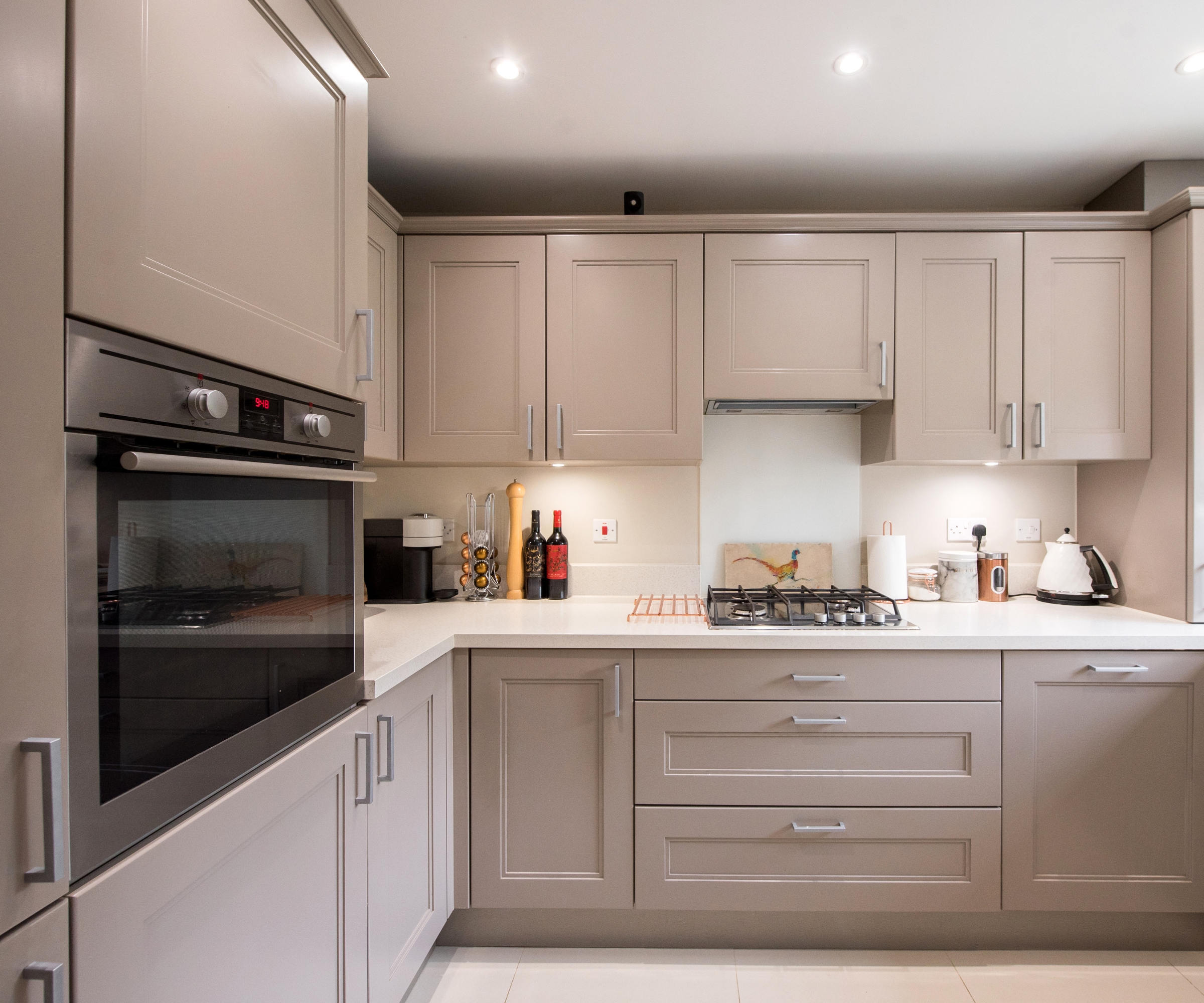
Using combination appliances saves space in small kitchens.
Instead of dual wall ovens, choose a multi-technology top oven with convection, microwave, warming, speed cooking, and even air frying in one unit, saving precious space.
The best toaster ovens are another handy addition and could even replace your air fryer or toaster.
Where not to put a microwave in a kitchen
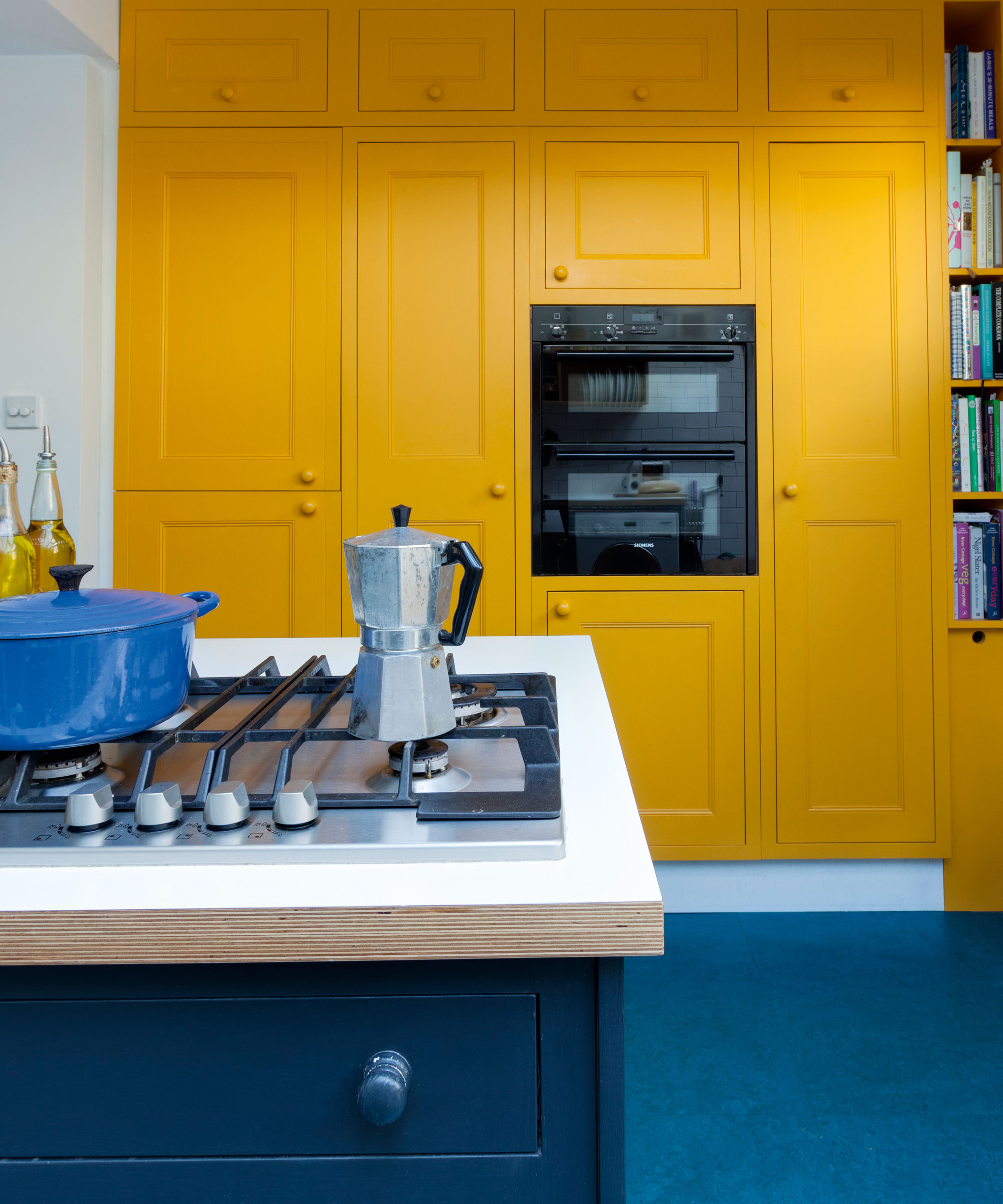
Wall-mounting microwaves is the best budget-friendly option for keeping appliances off of counters.
There are some places you should always avoid putting a microwave to avoid common home fire risks and maintain good flow in your kitchen workspace.
1. Above the stove
Placing the microwave above the stove is a popular option; however, it has its cons. Firstly, it makes cleaning the microwave a challenge, especially as it is more exposed to grease and food splatters and you have to clean the microwave filter. Secondly, reaching up over a hot stove to retrieve food from the microwave can be dangerous.
Not only that, but the close proximity to the stove could cause damage to your microwave over time.
John Mazzuca from Gambrick Construction warns, 'Heat and steam from cooking can harm the microwave's components and, believe it or not, the overall performance. It's wiser to position the microwave in a cool, ventilated spot away from direct heat sources.'
If space limitations mean the microwave has to go over the stove, make sure you pick a specific over-the-range microwave, such as the Microwave Hood Combination from Whirlpool.
John then suggests creating a gap of at least 30 inches. 'The microwave should also have a vent at its bottom to prevent damage caused by overheating while in use,' she adds.
2. Close to the sink
Electrical appliances and water should not be in each other's orbit. Given the potential fire risk, it's important to double-check that your microwave isn't placed too close to the sink, or other water sources, such the dishwasher.
Dave Roebel of Northeast Mechanical Services says, 'Water and moisture can be detrimental to the microwave's electrical components and increase the risk of damage or malfunction.'
3. Directly under cabinets or shelves
Although you can mount your microwave in cabinets, it is important to avoid placing it directly beneath shelving and blocking the vents.
Dave explains, 'Placing a microwave directly under cabinets or shelves can restrict proper ventilation and potentially cause the microwave to overheat. Microwaves generate heat during operation, and proper airflow is essential to prevent overheating and ensure safe operation.'
For this reason, it is best to have your microwave installed by a kitchen specialist who can ensure it is up to code.
What to shop

The Environmental Working Group (EWG) has certified Attitude products as non-toxic, meaning they contain no harsh chemicals or artificial compounds, making them perfect for cleaning food prep spaces such as microwaves.
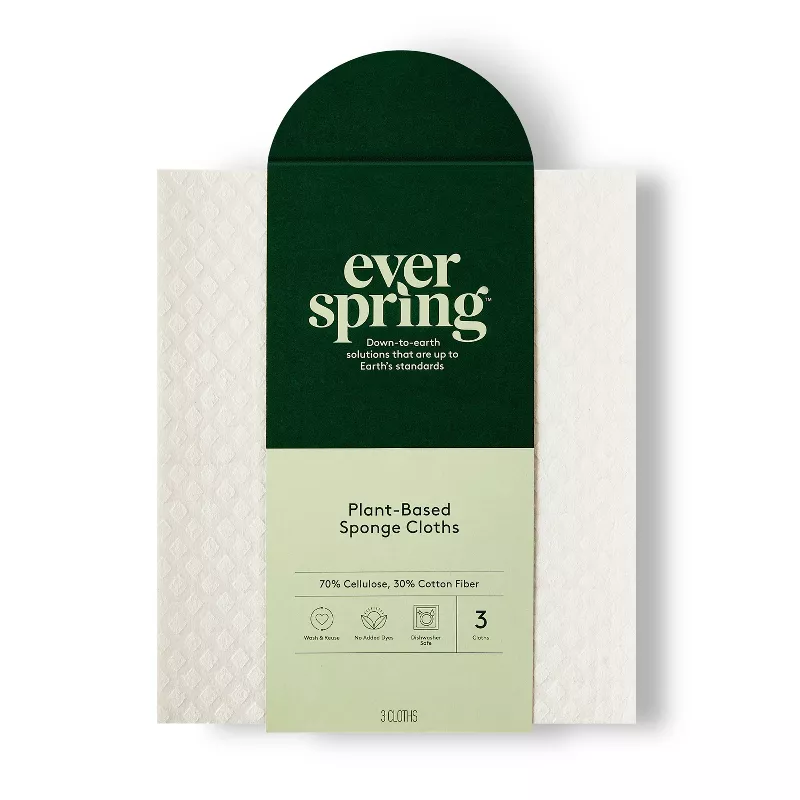
Sponge cloths are plant-based, meaning they are free from plastics and decompose in compost heaps in around 10 months, making them an eco-friendly, hygienic alternative to traditional sponges and paper towels for cleaning a microwave.

Remove odors and easily degrease a microwave by placing a bowl of 50/50 lemon juice and hot water inside and turning it on for one to two minutes. The steam melts grease while removing bad smells.
FAQs
How do you hide a microwave in a kitchen?
The best way to hide a microwave in a kitchen is to stash it underneath your counters/island, or inside a cabinet or pantry. When fitting a microwave, ensure that there is at least two to six inches on each side of the appliance to prevent overheating and maintain good air flow.
Can you put a microwave on a counter top?
It is perfectly fine to put a microwave on a countertop, although it can make a counter look cluttered and take up valuable workspace. If you do have to put a microwave on a counter, keep it towards the back or in a corner to avoid it being pulled over the edge, and use cable tidies, from Walmart, to hide cords on kitchen counters.
Meet the experts
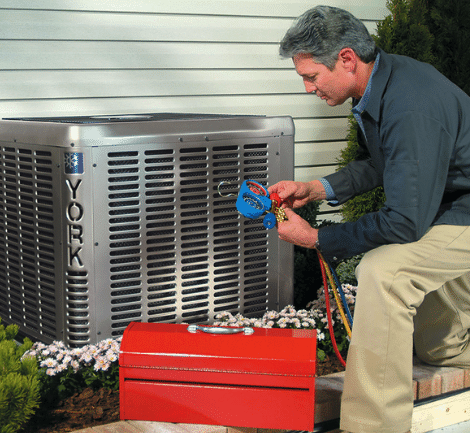
Dave Roebel is the Owner of Northeast Mechanical Services, a provider of mechanical solutions catering to a wide range of industries. Their products and services include expert installation, maintenance, and repair of HVAC equipment.

John Mazzuca is a custom home designer and builder at Gambrick with over 20 years experience in the construction industry. John has designed, built and/or remodeled hundreds of homes, small buildings, and commercial projects
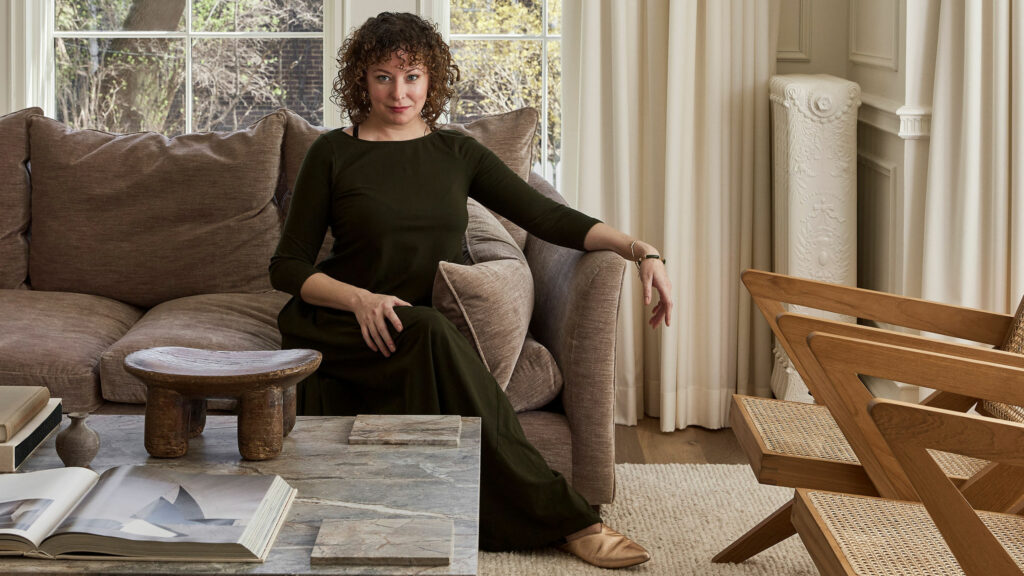
A graduate of McMaster's multi-disciplinary Arts & Science program in Hamilton, Ontario, Maia graduated with honours from Ryerson’s School of Interior Design and completed her BCIN, LEED AP, and NCIDQ designations before founding Black Sheep Interior Design.

Sarah Walker is the principal designer at Nuances Designs. She has a holistic take to design, as a gateway to health and well-being that begins with sustainable, healthy materials in her luxury showroom. Her expertise in combining beauty with functionality in unique ways sets her apart.

Trudi Smith is a certified interior designer who studied architectural design. She specializes in bathrooms and kitchens, creating functional and balanced spaces, and knowing exactly where to place appliances is a speciality.
We rely on our microwaves a lot to make everyday life easier, from heating up batch-cooked meals for midweek dinners to softening butter for baking, so getting the location right is key.
Just be sure to check which things you shouldn't put in a microwave to avoid damaging it after finding the perfect spot.

Chiana has been at Homes & Gardens for two years and is our resident 'queen' of non-toxic living. She spends most of her time producing content for the Solved section of the website, helping readers get the most out of their homes through clever decluttering, cleaning, and tidying tips. She was named one of Fixr's top home improvement journalists in 2024.